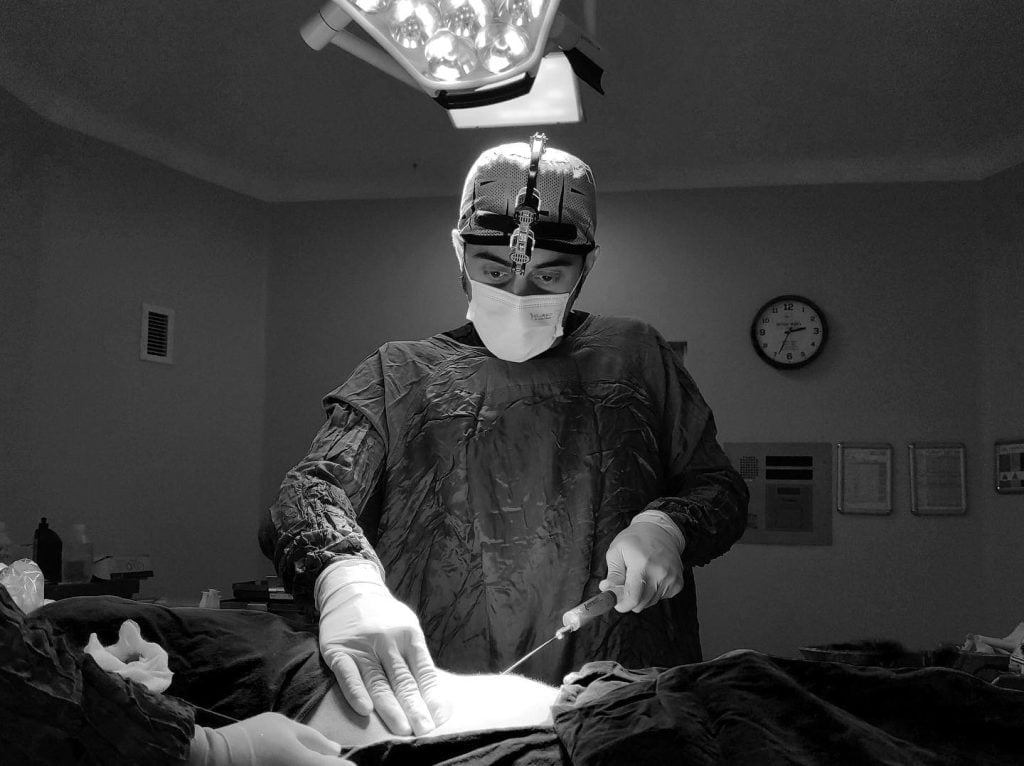The Adam’s apple, formally known as the laryngeal prominence, is a cartilaginous structure located in the throat. Its prominence varies significantly between individuals, influenced by genetics, sex, and age. While some individuals desire a less prominent Adam’s apple, removal is a significant surgical undertaking with potential risks and complications. This article explores the surgical options, associated risks, and alternatives to consider before pursuing Adam’s apple removal. It’s crucial to remember that this is a complex procedure and should only be considered after thorough consultation with a qualified medical professional. There is no net fee associated with this information, however, actual procedure costs will vary.
Understanding the Adam’s Apple
The Adam’s apple is the anterior projection of the thyroid cartilage, which surrounds the larynx (voice box). Its size and prominence are largely determined by genetics and hormonal influences, particularly testosterone. Men generally have a more prominent Adam’s apple due to higher testosterone levels during puberty, leading to increased growth of the thyroid cartilage. However, the size and visibility of the Adam’s apple can also vary greatly among individuals of the same sex.
Some individuals may have a naturally less prominent Adam’s apple, while others may find theirs more noticeable. Understanding the anatomical function of the Adam’s apple—protecting the vocal cords and playing a role in voice production—is crucial before considering removal. It’s important to note that the Adam’s apple itself is not directly involved in voice production, but its surrounding structures are.
The Adam’s apple’s appearance can be influenced by factors beyond genetics. Weight fluctuations can affect its prominence, as can certain medical conditions. Furthermore, the perception of the Adam’s apple’s size can be subjective, with individuals often perceiving it as more or less prominent than others might. This subjective perception should be considered when evaluating the desire for surgical removal. A detailed discussion with a surgeon is vital to establish realistic expectations and assess whether surgery is the appropriate course of action. Many individuals are perfectly content with their Adam’s apple, irrespective of size or prominence.
The psychological impact of a prominent Adam’s apple varies widely. Some individuals may feel self-conscious about its appearance, leading to feelings of discomfort or dysphoria. For these individuals, exploring options for reduction might be considered, but it’s essential to address any underlying psychological issues through therapy or counseling, in conjunction with any surgical intervention. Addressing the psychological aspect is crucial for a positive outcome, regardless of the chosen course of action. The goal is to improve overall well-being, not just to alter physical appearance.
Finally, before considering any procedure, a comprehensive medical history needs to be taken. This includes details about any existing medical conditions, allergies, and current medications. This information is crucial for the surgeon to assess the risks and suitability of the procedure for the individual patient. A complete understanding of the patient’s overall health is paramount for a safe and successful outcome.

Surgical Options for Removal
Chondrolaryngoplasty is the primary surgical procedure used to reduce the prominence of the Adam’s apple. This involves reshaping or reducing the size of the thyroid cartilage through an incision made in the neck. The surgeon carefully removes a portion of the cartilage, reducing its projection. This procedure can significantly alter the appearance of the Adam’s apple, making it less noticeable. The incision is typically placed strategically to minimize scarring, often hidden within natural skin folds. Recovery time varies depending on the extent of the surgery and individual healing rates.
The specific surgical technique employed depends on several factors, including the desired outcome, the size and shape of the Adam’s apple, and the individual’s anatomy. Some procedures may involve only removing a small portion of the cartilage, while others may require more extensive reshaping. The surgeon will discuss the various options and recommend the most appropriate technique based on the patient’s individual needs and goals. Post-operative care typically includes pain management, wound care, and monitoring for complications.
The procedure is typically performed under general anesthesia, meaning the patient is completely asleep during the surgery. The length of the procedure can vary, but it generally takes several hours to complete. The surgeon will provide detailed instructions on post-operative care, including dietary restrictions, activity limitations, and follow-up appointments. It is crucial to adhere to these instructions carefully to ensure proper healing and minimize the risk of complications.
Average estimated fees for a chondrolaryngoplasty can range from $5,000 to $15,000 or more, depending on the surgeon’s fees, the facility used, and the complexity of the procedure. These fees do not include anesthesia, hospital stay, or post-operative care. It’s important to obtain detailed cost estimates from multiple surgeons before proceeding. Remember this information is for general knowledge and does not constitute medical advice.

Risks and Complications Involved
As with any surgical procedure, chondrolaryngoplasty carries potential risks and complications. These can include bleeding, infection, scarring, and nerve damage. Nerve damage can lead to temporary or permanent changes in voice quality, sensation in the neck, or swallowing difficulties. The risk of these complications is generally low but cannot be entirely eliminated. Thorough discussion with the surgeon is vital to understand the potential risks and benefits.
Scarring is a common occurrence after any surgical procedure. While surgeons strive to minimize scarring through careful incision placement and techniques, some scarring is inevitable. The appearance of the scar will vary depending on individual healing responses and may fade over time. The surgeon will discuss strategies to minimize the visibility of the scar, such as using specialized suture techniques and providing post-operative care instructions to promote optimal healing.
Changes in voice quality are a potential complication, though generally temporary. The surgery is performed in close proximity to the vocal cords, and there is a risk of temporary or, in rare cases, permanent changes in voice quality or pitch. The surgeon will discuss this risk in detail and explain the steps taken to minimize this possibility. Regular follow-up appointments are crucial to monitor for any changes in voice quality.
Respiratory complications, though rare, are also a possibility. These can include difficulty breathing or swallowing, particularly in the immediate post-operative period. The surgeon will closely monitor the patient’s respiratory function during and after the surgery. It’s essential to report any breathing difficulties immediately to the medical team.
Alternatives and Considerations
Before considering surgery, exploring non-surgical options is crucial. If the desire for Adam’s apple reduction is driven primarily by psychological concerns, therapy or counseling can be highly beneficial. Addressing the underlying emotional or psychological issues can often alleviate the distress associated with the appearance of the Adam’s apple, making surgical intervention unnecessary.
Makeup techniques can also be used to subtly alter the appearance of the Adam’s apple. Contouring and shading techniques can create the illusion of a less prominent Adam’s apple, offering a non-invasive and reversible alternative. Professional makeup artists can provide guidance and training in these techniques. This option provides a temporary solution and allows individuals to experiment with different looks before considering more permanent changes.
Acceptance and self-love are important considerations. Many individuals find peace and contentment by accepting their bodies as they are, regardless of perceived imperfections. Exploring self-acceptance strategies, such as positive self-talk and body positivity practices, can be highly beneficial in improving overall well-being and reducing the desire for body modification. This approach focuses on inner peace and self-acceptance rather than focusing solely on outward appearance.
Finally, seeking a second opinion from another qualified surgeon is always advisable. This allows for a comprehensive evaluation of the situation and ensures that all options have been thoroughly explored before making a decision. This independent perspective can provide valuable insights and help clarify the best course of action.
The decision to remove an Adam’s apple should not be taken lightly. It’s crucial to thoroughly weigh the potential benefits against the associated risks and complications. Exploring non-surgical alternatives and addressing any underlying psychological concerns are essential steps before considering surgery. Open communication with a qualified medical professional is paramount to making an informed and responsible decision that aligns with your individual needs and goals. Remember, the information provided here is for educational purposes only and should not be considered medical advice. Always consult with a qualified healthcare professional before making any decisions regarding your health.

Visit Dr.MFO Instagram profile to see real patient transformations! Get a glimpse of the incredible results achieved through facial feminization surgery and other procedures. The profile showcases before-and-after photos that highlight Dr. MFO’s expertise and artistic vision in creating natural-looking, beautiful outcomes.
Ready to take the next step in your journey? Schedule a free consultation with Dr. MFO ( Best Facial Feminization Surgeon for You) today. During the consultation, you can discuss your goals, ask any questions you may have, and learn more about how Dr. MFO can help you achieve your desired look. Don’t hesitate to take advantage of this free opportunity to explore your options and see if Dr. MFO is the right fit for you.









